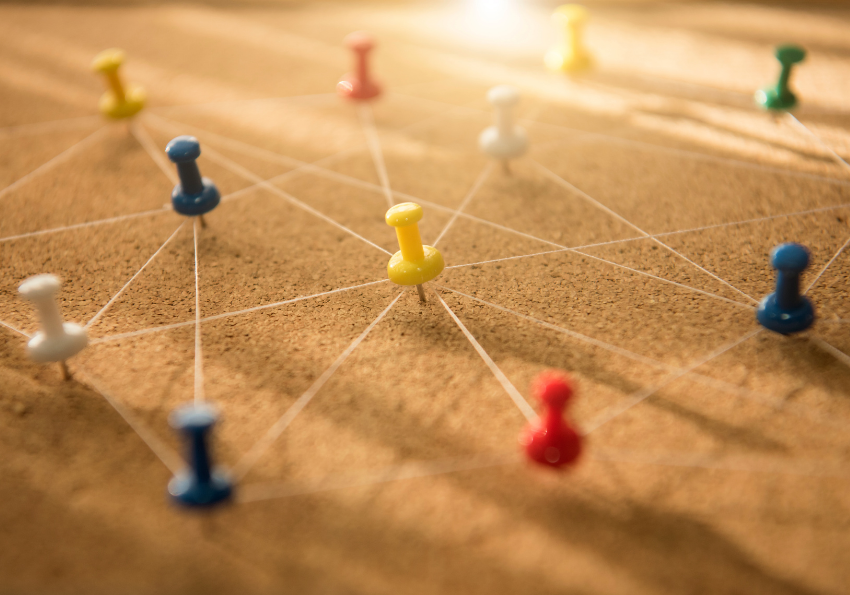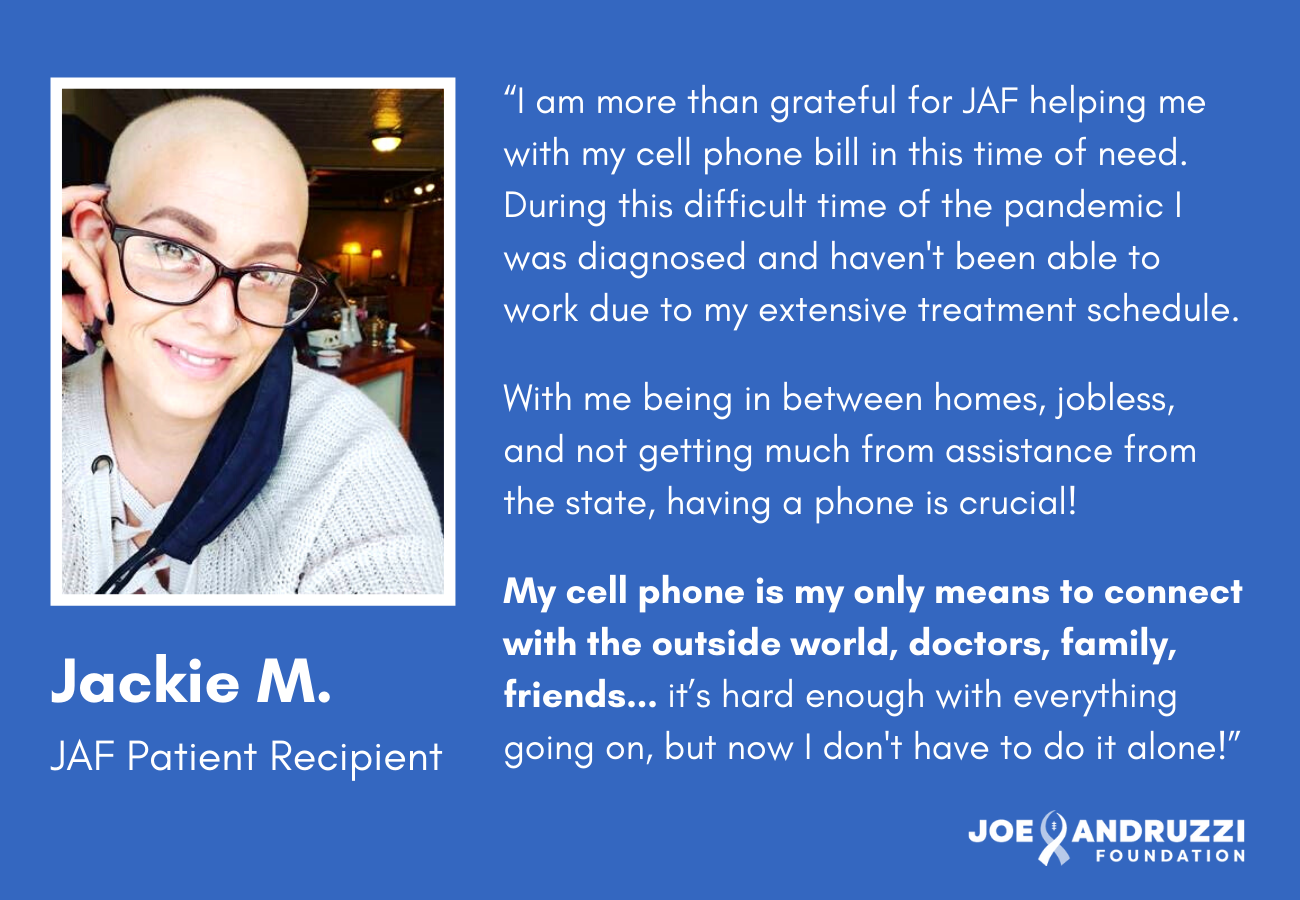Many of us take for granted the power of that small electronic device called a ‘cell phone’ that we carry with us every day – or, the ability to log-on to our tablets or laptops just about anywhere in the world. Who hasn’t had that panicked moment while commuting to work or leaving a coffee shop? “Oh no! I forgot my phone!”
And who also hasn’t politely inquired upon arrival at the home of a friend, or even a retail store, “What’s the Wi-Fi here?” Internet access seems as commonplace as water to so many – without it, it seems we cannot exist. (Or at least efficiently function.)
So many of us would be completely lost without our phones or tablets, unable to remember phone numbers or passwords. Some folks may even be more comfortable losing their wallets than their phones. After all, we can pay by phone or cancel lost credit cards with a few clicks and Wi-Fi access. But for many patients facing a cancer diagnosis and experiencing steep financial burdens due to their diagnosis, they can feel the sting – and the anxiety – of losing both their financial security and their phone access.
For some, access to the internet equates to the ability to ask Siri about the weather, check the latest Instagram sensation, or have Netflix at your fingertips. For others, like cancer patients and their families, phones and internet access is so much more; for them, the internet serves as a true lifeline. Using internet and phone services, patients and their family members can employ it as a powerful tool for self-care management – the method by which they control or cope with an illness – educating themselves on a diagnosis, researching care options, accessing support groups and sourcing critical emotional and financial aid opportunities. However, for those experiencing financial distress because of their diagnosis, paying for hefty cell phone or internet bill can seem a herculean effort and might take a backseat to other household bills.
Enter now, coronavirus. As the world went remote, our reliance on phone and internet services intensified and our ability to remain connected was no longer a luxury, but a necessity. For many cancer patients and their families struggling with the disease, and forced to isolate at home, access to phone and cable services ensures not only safety, but survival. Amid the pandemic, internet and phone became the sole means of accessing and maintaining care, and a loss of connectivity could be devastating: how will they access their records or important test result without the internet? How will they confer with their care teams without reliable cell phone connectivity? How will they research clinical trials or treatment options without access to a Wi-Fi connection at home?
As both the need to be connected, and the demand for safeguarding against infection increases, cancer patients and families experiencing financial barriers face deepening challenges to connectivity and safety.
“There are lots of different ways that COVID-19 is complicating the lives of cancer patients,” says Lori DuBenske, PhD, a cancer psychologist with the UW Carbone Cancer Center. “Living with a compromised immune system can be difficult enough, but the added anxiety over contracting COVID-19 can be a heavy burden.”
Though not a novel concept, telehealth – healthcare via telecommunication technology – has become an extremely valuable and indispensable care delivery method since the pandemic struck, especially for those most vulnerable to the virus. Without it and access to the internet, cancer patients are cut off from care and access to information that could be critical to their health.
Made possible by internet and phone access, telehealth allows immunocompromised cancer patients in active treatment to reach their care teams conveniently and without risk of exposure to COVID-19, and in some cases, offers relief from the added burden of other debilitating expenses. From the safety of home, patients can video-chat with an oncology team, or access imaging through a file share, managing and maintaining critical care without interruptions and without the threat of exposure in crowded areas such as hospital waiting areas and public transit. Without telehealth and reliable access to phone and internet, however, patients may have higher likelihood of interruptions to care and negative health outcomes that could be resultant of a delayed or cancelled preventive or routine care.
For those cancer patients and families managing the crippling effects of financial toxicity compounded by the virus, this connectivity may result in cost savings, alleviating further financial stress for families facing cancer. Conferring with care teams virtually means that patients themselves, or their caregivers, don’t incur costly travel expenses that add up – think gas, parking fees, tolls or even care wear and tear. It also means they don’t need to take time from work or pay for family/childcare – especially if a working caregiver is the sole source of income and responsible for appointment coordination and transportation for a loved one.
Beyond telehealth, internet and phone access for many patients represents a much-needed outlet and essential means to remain in contact with family and friends. And not just for cancer patients. For caregivers managing the needs of an immunocompromised loved one, or children of a sick parent, the strict health safeguards during the pandemic might mean not going outside the home to see friends or family or accessing routine channels for stress relief. As isolated cancer patients and families cope with anxiety and loneliness, the ability to remain connected virtually through phone and internet allows for critical emotional support from their networks.
In a health and economic climate that seems to be continually shifting, telecommunications are more vital to our livelihoods and survival than ever before – offering safety, convenience, and connectivity. With some researchers and medical professionals viewing lack of internet as a social determinant of health – the same as food insecurity and housing instability – we see how significant telecommunications are to our most vulnerable populations, including the cancer patients and families that JAF supports.
From 2017 to 2019, JAF distributed more than $280,000 in direct financial assistance for phone and cable expenses – that’s over 800 households who were able to stay connected with JAF support.
At a time when connectivity was critical, this support helped cancer patients, their caregivers, and family members throughout New England cover their phone and cable bills during treatment.
For cancer patients and their families, access to internet and phone is not just about ‘surfing the web’ or making phone calls, it’s about empowering cancer patients and their families to have agency over their diagnosis and care and emotional wellbeing.



